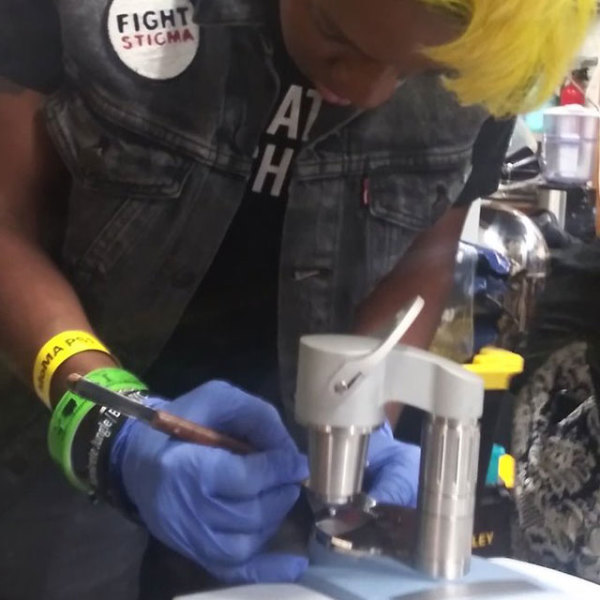
Increase safety, awareness, and reduce preventable deaths in our youth populations without judgment
About Me
I am Phoenix or Mohawk, also known as The Rebel Educationist. I need your help to keep being the most tenacious and unyielding harm reduction vigilante in NYC (sometimes worldwide, it depends on what I’m asked to do, heh). I’ve been engaged in this activism and advocacy work for 10 years now, and have been continually pushing the envelope, trying to offer more. I was a finalist for the David Prize, a lump sum of money that would have been used to give this project the backing it needs for it and myself to thrive. I was unable to receive the funds, but through the exposure, was offered the advanced equipment needed to excel my services.
About My Work
The $160,000 I’m raising is the remainder of the $200,000 fund I advocated to the best of my ability to earn. I’ve subtracted the cost of the $40,000 FTIR (Fourier-transform Infrared) spectrometer recently purchased for this work. I will use this spectrometer (in addition to other drug-checking tools) and support from Drugs Data (drugsdata.org) and other mass spectroscopy labs to provide sliding-scale drug-checking services. I will perform drop-in testing and research and collaborate with other professionals in the field to implement mobile and on-site testing in various locations where youth substance use is prevalent.
Test results, drug information, and harm reduction recommendations will be spread through digital mediums, such as social media, a website database, and direct communication with clients. Examples of this can be seen from organizations such as DanceSafe.org, DrugsData.org, SaferParty.ch, and KnowYourStuff.nz and others around the world to bring attention to important public health information about illicit drug market trends. These platforms will allow the general public access to crucial life-saving information about the current drug supply, even without performing their own testing.
In the future, I want to educate, empower, and train others in the community to be able to, at the minimum, build similar skills for themselves or to use within their circles. These skills are more critical than ever and can lead to employment opportunities.
The Bruker Alpha II FTIR Spectrometer will arrive approximately 16 weeks from November 8, 2022. I want to hit the ground running as soon as the machine arrives, providing services. I am restricted by Indiegogo to set the campaign for 60 days, but I will continue fundraising beyond this point until the need is met.
How the Funds Will Be Used
- 160,000 will equate to roughly 3-4 years of salary on average for a spectrometer technician.
- To cover any out-of-pocket expenses: vehicle maintenance/other transportation, testing supplies (immunoassay test strips, reagent test kits, other tools involved with testing, PPE, etc.), machine servicing/maintenance, subscription to the proprietary drug library (very important for identifying emerging substances), online/web services, etc., that are not covered by the “low barrier” fees.
Long-term goals:
- Build upon an online database of drug checking results/reports.
- Analyze emerging potentially harmful and lethal drug trends/tracking for preventative health interventions and education.
- Train other community members on drug checking–I want people to be able to do this on a broader scale and grow their skill set.
- Lay groundwork for others to do similar work.
Drug checking as a harm reduction strategy offers many potential benefits. It can help users, health services, and harm reduction groups have honest conversations about reducing the risks associated with drug use and preventing PWUD (people who use drugs) from consuming increasingly toxic substances.
Existing consumer-focused strategies like colorimetric reagents and immunoassay test strips have limitations for analyzing drug contents. More advanced analysis services are significantly less accessible to young queer and trans people of color who use drugs in a “non-problematic” manner.
If harm reduction interventions like this did not work to reduce drug-specific morbidity and mortality, it would not be an initiative supported by our local and federal government and by people in the community who can see past any moral biases they have around drug use and focus on compassion and community care for their fellow neighbors. Evidence and data, both locally and worldwide, show that harm reduction saves lives even on a small scale.
As Mayor Eric Adams has been quoted: “I’m proud that New York City is leading the way in overdose prevention and taking action to save lives — because a crisis does not wait, and neither can we. Now is the time to expand access… and do so in an equitable way across New York City.”
To learn more about me and my work, you can visit my website and socials.

